10 Days Best of South Korea Tour




This itinerary perfectly shows you around the best of Korea, from North to South and from west to east of Korea. This is a harmonious blend of unique natural landscape in Jeju and Mt. Seorak, historical sites in Gyeongju, ancient cultural sceneries in west of Korea and the most fascinating combination of the old and the new in Seoul. This tour will enable you to experience the best of Korea for 10 days. We guarantee departures even for 2 travelers. Join us so hat you can travel with like-minded people from different countries, enjoying our unique and highly valued services.
* Minimum 2 persons are guaranteed to depart every Sunday.

Day 1
Seoul > Buyeo > Jeonju > Gwangju
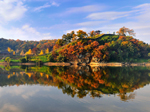
You will meet your tour guide in front of the main gate of Sinsegye Department Store located near Gangnam (Banpo) Express Bus Terminal and then head for Gongju. The first stop on the tour today is the toumb of King Muryeong and Gongsansung Fortress.
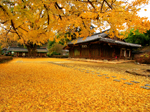 Next you will go to Buyeo, the ancient capital of the Baekjae Dynasty (18 BC - 660 AD), where you will visit Goransa Temple and Nakhwaam Bluff. Here at the bluff is where 3,000 court ladies of Baekjae plunged into the river to avoid being captured and dishonored when an invading enemy breached the castle on the last day of the Kingdom. Optional tour: Cruise ($12 USD). You will continue to Jeonju to visit Jeonju Hanok Village including about 700 traditional Korean houses called Hanok. The final stop on the tour today is Gwangju, the leading city of Southern Korea and birthplace of a modern democratic movement in Korea.
Next you will go to Buyeo, the ancient capital of the Baekjae Dynasty (18 BC - 660 AD), where you will visit Goransa Temple and Nakhwaam Bluff. Here at the bluff is where 3,000 court ladies of Baekjae plunged into the river to avoid being captured and dishonored when an invading enemy breached the castle on the last day of the Kingdom. Optional tour: Cruise ($12 USD). You will continue to Jeonju to visit Jeonju Hanok Village including about 700 traditional Korean houses called Hanok. The final stop on the tour today is Gwangju, the leading city of Southern Korea and birthplace of a modern democratic movement in Korea. Day 2
Gwangju > Suncheon > Yeosu
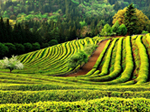
Today you will begin the tour in Gwangju and visit Gwangju City Museum, Asia Munwha Maru for a Hub City of Asian Culture and a street of arts. The next stop on the tour is Boseong Green Tea Plantation, a beautiful green field where you can enjoy the tea plants’ pleasant fragrance.
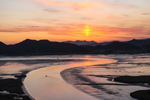
You will continue to Suncheon Bay, well-known for its vast reed fields registered on The Ramsar List of Wetlands of International Importance. It is also famous for attracting the largest number of rare birds. The final stop on the tour today is Yeosu, a beautiful port city hosted 2012 World Expo, where you will visit a fish market and Yeosu Industrial Complex.
Day 3
Yeosu > Busan > Jeju Island
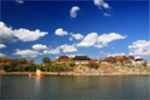
The first stop on the tour today is Jinjuseong Castle, a 1,760-square-meter stone castle and the sacred ground of the Jinju battles. Originally the castle was built of mud, but it was rebuilt with stones in 1379 by King Woo of the Goryeo Dynasty to withstand the frequent invasion of sea marauders. During the Japanese invasion of Korea in 1592, General Kim Si-min defeated Japanese forces at this castle, one of three great victories during the war. In 1593, during the second Jinjuseong Battle, approximately 70,000 militia corps and government troops resisted the invading Japanese and died gloriously for their country. Next you will visit Nongye Shrine, named after a Korean geisha who died with a Japanese enemy general by embracing him and leaping into a river, and Chokseokru Pavilion in Jinju city.

You will continue to Gimhae Airport in Busan for the flight to Jeju Island, the premier tourist destination in Korea because of its stunning natural scenery and superior tourist amenities. Your tour guide will meet you at the airport on Jeju Island. Jeju Island is a volcanic island and its lava tubes have been registered by UNESCO as a natural World Heritage Site. On Jeju Island scenic beaches, waterfalls, cliffs and caves lie in harmony and together with the mild weather makes Jeju Island an even more ideal tourist site.
Day 4
Jeju Volcanic Island
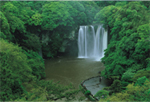
You will begin today's tour by visiting Cheonjiyeon Waterfall, a three-tiered waterfall surrounded by lush foliage and also named the Pond of God. To the east there is a cave where cold water pours from the ceiling to create a waterfall. The water from the first waterfall becomes the second and third waterfalls and then flows into the sea. A legend about seven nymphs and a mountain god is tied to this wondrous place. The next stop is Gyulimseong, a citrus farm and museum with nearly 1000 wild plants and flowers growing in the basalt volcanic rock. Optional tour: A pleasure boat cruise in Seogwipo where you can enjoy the view from both above and below the sea ($18 USD). Many isolated and unexplored regions including islands and Seogwipo’s beautiful coastal scenery are viewed from the boat.
Next you will visit Spirited Garden, recognized as one of the most beautiful gardens in the world by the press. Prominent figures from around the world have visited this garden since it opened in July 1992. The garden, where the beauty of nature is harmonized with art and philosophy, offers rare opportunity to commune with nature.
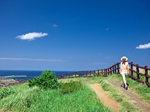
You will continue to Jeju Olle, 200km of connecting paths that will take travelers all along the breathtaking coastline of Jeju Island. Jeju Olle, which was inspired by the famous Pilgrim’s Trail in Spain, was made from the hidden and forgotten routes of Jeju Island which cannot be accessed by car. Jeju Olle will take you to forests, mountains, beaches, and remote places and offer unrivalled views over Jeju’s unique, dramatic volcanic landscape.
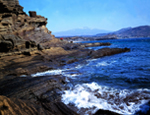
The next place you will visit is Yongmeori (Dragon Head) Shore – an impressive and beautiful oceanside promenade of soaring, weather-blown cliffs. Note that Yongmeori closes during very high seas. If this is the case during your visit, you will visit Sangbanggbulsa, a natural cave overlooking the ocean. Optional tour: Traditional dyeing experience using natural dyes and fibers ($10 USD).
Day 5
Jeju Island > Busan
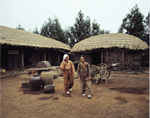
After having breakfast at your hotel, you will check out and begin the day’s tour at Seongeup Folk Village, a wonderful example of Korea’s preserved cultural traditions, including residential houses, Confucian shrine and schools, ancient government offices, stone statues and monuments and fortress ruins. Here you can also experience folk plays, native foods, local craftsmanship and local dialects that have been handed down through generations. When you explore this area, you like you have traveled back in time.
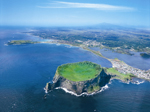
After lunch, you will visit Seongsan Ilchulbong (Sunrise Peak), then transfer to Jeju International Airport and fly to Busan, the 2nd largest city in Korea. After your guide meets you at Gimhae Airport in Busan, you will have dinner and then transfer to your hotel.
Day 6
Busan > Gyeongju > Daegu
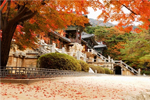
The first stop on the tour today is Gyeongju, the ancient capital city of the Silla Dynasty (57 BC - 935 AD). Gyeongju is really like a museum without walls because of all the historical and cultural heritage sites. Here you will visit Bulguksa Temple built during the most glorious period of the dynasty and is one of the best known temples in Korea. The architectural design of the temple is one of constrained dignity, peace and harmony and the temple still remains as one of the remarkable achievements of the ancient Far East region.
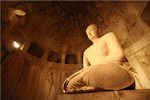
You will continue on to Seokguram Grotto the home of eighth century stone Buddha built during the glorious period of the Silla Dynasty and said to be one of the finest Buddhist shrines in the world. Inside, a serene white statue of a seated Buddha in the sublime state of enlightenment is surrounded by Bodhisattva, disciples and guardians. Both of Bulguksa Temple and Seogulram Grotto are listed as UNESCO World Cultural Heritage Sites.
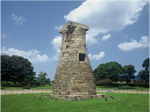
Afterwards, you will visit Gyeongju National Museum, displaying the 23-ton Emille Bell built in 771 AD as well as thousands of priceless treasures. Finally you will transfer to Cheomseongdae, the world's oldest astronomical observatory built during Silla Dynasty.
More Information about Gyeongju
More Information about Gyeongju
Day 7
Daegu > Haeinsa Temple > Andong > Mountain Seorak
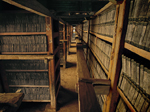
Today you will transfer to Haeinsa Temple located in Gayasan National Park. Haeinsa Temple was found by King Ae-Jang of Shilla Dynasty (802), well known for its famous treasure Tripitaka Koreana (UNESCO World Heritage), the most complete collection of Buddhist texts in the world. It is composed of 81,341 printing wood blocks carved in an appeal to the authority of the Buddha in the defense of Korea against the Mongol invasions.

You will continue on to Andong, renowned for being the home of the intellectual aristocratic class of Korean society and Confucius scholars during Joseon Dynasty (1392-1910), as well as the birthplace of some of Korea’s cultural traditions including Hahoe masks, Chajeon games and Hahoe spirit rituals. Queen Elizabeth II of Great Britain visited here several years ago, marking it as a popular international tourist attraction.
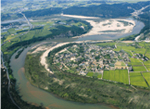
Andong Hahoe Village has preserved its traditional houses and village structure from the Joseon Dynasty. It is a living village, in that a small community of people still live here. Three sides of Hahoe Village are surrounded by the Nakdonggang River, and the village got its name from the way in which the river meanders through it - directly translated, Hahoe means spinning river. Next to Hahoe Village there are many pine trees and a soft sand plain, and across from it is a stunning cliff.
Day 8
Mountain Seorak National Park > Seoul
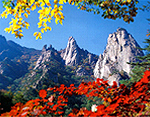
Today you will transfer to Mt. Seorak National Park, designated as a natural monument preservation area and as a Biosphere Preservation District by UNESCO. Seorak means ‘snowy mountain’ in the Korean language, and Mt. Seorak was named so because the snow on its peaks does not melt. The park is spread across four cities and counties: Sokcho, Inje, Goseong and Yangyang. The highest peak is Daecheongbong (1,708m); to the east is OeSeorak (outer Seorak) and to the west is NaeSeorak (inner Seorak), which is divided again into North NaeSeorak and South NaeSeorak. North NaeSeorak is composed of Bukcheon, a stream which flows to Ingyecheon and Baekdamcheon. There are numerous valleys in NaeSeorak. If you follow the Baekdamcheon Valley where all the streams meet, you will reach Baekdamsa Temple.
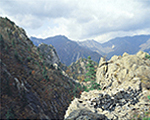
You will have the opportunity to take an optional tour: ride a cable car to Gwongeumseong Fortress, ruins located on the steep stone side of Mountain Seorak ($15 USD). The Fortress is believed to have been built by the 23rd King of the Goryeo Dynasty (918-1392), King Gojong who lived from 1213-1259. At the plateau of Gwongeumseong Fortress you can see the East Sea and the city of Sokcho. Also, to the west, you can see the fantastic rocks and stones that makes up the Seorak Mountains.
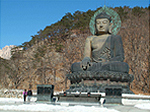
Shinheungsa Temple is a short walk away from the entrance to the fortress. This temple used to be called Hyanseongsa, originally built by Jajangyulsa, who lived from 590 - 658 and who traveled to famous mountains all over the nation during the Silla Dynasty. The temple has been destroyed and rebuilt many times since then. On the path to Shinheungsa, there is a great bronze statue over 10 meters high. Just beyond the statue on a granite terrace, there is a bridge that was recently built for crossing the ravine. Past the bridge there is a long stone wall with a Cheongwang door, and from here you can enter the temple. After exploring Mt. Seorak National Park, you will transfer to Seoul and check in to your hotel.
Day 9
Seoul > Korea Folk Village > Seoul
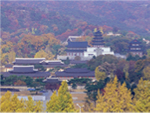
Today you will begin your tour with a visit to Gyeongbok Palace. Gyeongbok Palace was the main palace during the Joseon Dynasty (1392-1910), and is a particularly charming tourist spot representing a colorful and turbulent part of the capital city's 500-year-old history. Next you will move on to the Korea National Folk Museum, which helps to familiarize visitors with the cultural wealth of this friendly and picturesque nation. You will continue to Insa-dong street, a place known as the center of traditional Korean art and antiques in Seoul.
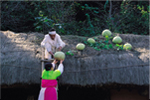
The final stop on today’s tour is Korea Folk Village, an open-air real life museum recreating Korean life from several centuries ago, and preserving some of the country's rich traditional and cultural heritage. A wide assortment of residential structures from straw-thatched cottages of commoners to the 99-room mansions of the noble class has been reproduced to help illustrate the diversity of traditional Korean lifestyles and culture. The farmer's dance and music, one of Korea's most popular forms of entertainment, is performed on daily basis.
Day 10
Seoul
Today is the last day of the tour. After breakfast at your hotel, you will have time on your own to explore the vibrant city of Seoul.
Meal:
Breakfast
* Photos courtesy of Korea Tourism Organization and visitseoul.net.
* The cost of the tour includes: Hotels / Guides / Transportation / Meals (as indicated in the itinerary) / Entrance fees.
* The cost of the tour does not include: International and domestic flights / Travel insurance / Optional tours / Dinner / Tips for the guide and driver ($10 USD per person per day is recommended) / Personal expenses.
Terms and Conditions
- Prices may vary due to availability. We reserve the right to make price adjustments without prior notice.
- Although it is our strong intention to follow the agreed itinerary, there will be a degree of flexibility in consideration of various operational factors including flight delays or bad weather.
- Please refer to our Terms and Conditions before you make your reservation.
- Although it is our strong intention to follow the agreed itinerary, there will be a degree of flexibility in consideration of various operational factors including flight delays or bad weather.
- Please refer to our Terms and Conditions before you make your reservation.

